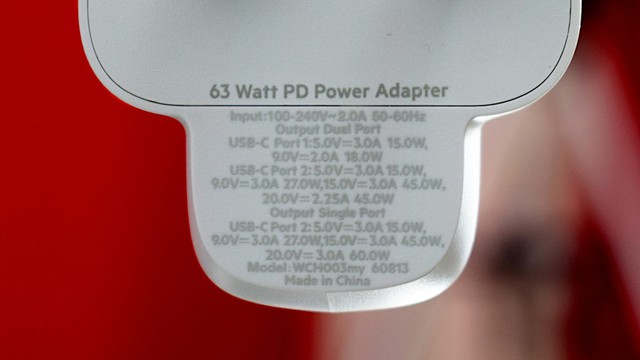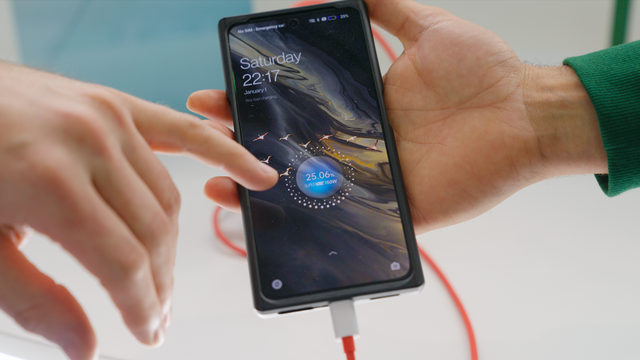The “civil war” of fast charging between Android smartphones
- Tram Ho
Your next smartphone will most likely not come with a charging cup in the box. Not only high-end models, we have seen more and more mid-range devices follow this trend. Samsung Galaxy A53 and Nothing Phone 1, two popular mid-range options for 2022, do not come with a charger. And perhaps similar to the disappearance of the 3.5mm headphone jack, eventually more companies will follow and ditch the charging cup.
Therefore, it is time for manufacturers to abandon proprietary charging technology in favor of using common standards and here’s why.

No charger available in the box: A worrying future?
Although Samsung and Nothing created a bit of inconvenience for customers when they did not come with a charging cup, many users were able to use the phone, including fast charging, without buying an additional charger from the company. This is because both companies rely on the USB Power Delivery standard for fast charging. Despite its different name, Samsung Super Fast Charging is not a proprietary standard. Instead, it is based on the USB-PD Programmable Power Supply (PPS) specification.
You can use any PPS-enabled charger – even a third-party charger – to charge a modern Samsung device. However, this is not true for many other smartphone brands, including Xiaomi, OnePlus and Oppo, etc. These brands are at the forefront of fast charging technology, with their proprietary protocols supporting the technology. power up to 150W. However, if you use a USB-PD charger with these devices, they can only deliver 18 or 27W of charge.

Needless to say, this disparity is cause for concern. Many people don’t own a SuperVOOC charger, so if OPPO stops providing the charger in the box, you have no choice but to buy one if you want to make full use of the fast charging capabilities. You can use a combination of chargers from OnePlus, OPPO, and Realme, but that’s only because they’re all based on the same technology. By contrast, USB Power Delivery is ubiquitous these days, and you’ll find it supported on everything from MacBooks to Bluetooth speakers.
With many phone companies pushing fast charging technology, for example, OnePlus has gone from 30W to 150W in just three years, although it is still shipping chargers with new devices for now, what will happen? if that ends?
Even if you have the right proprietary charger, it will probably be slower than what the new device supports. Then, if you upgrade to a new charger, the old charger may become useless again because it won’t fast charge any of your other devices. Overall, it’s a vicious cycle. Not to mention the e-waste they cause.
Why should we have a common fast charging standard?

We often argue about setting a common charging port standard, instead of having to choose between Lightning or USB-C, but the charging standard itself needs a consensus.
It’s clear that proprietary charging technology doesn’t fit the tech landscape increasingly geared toward compatibility.
Adopting a common standard like USB Power Delivery won’t fix the USB-C fragmentation problem anytime soon, but it will at least allow us to share chargers between more devices. Today, many devices such as laptops already support 100W charging via USB-PD. And the new 240W technology will make the standard even more useful in the future. So standard USB-PD chargers will continue to get cheaper as more devices support them.
Currently, for the price of a Samsung or Google-branded charger, you can opt for a third-party adapter that offers more charging power or more ports. Sadly, this isn’t possible with proprietary charging, where you have no choice but to spend $30 to $50 on a first-party product that may not even work well with any other device. any of your other devices.
Not only the charging cup, most power banks and car chargers also do not support proprietary protocols. As with the charging cup, the charging power in these cases will usually drop to 10W or 18W – which is unacceptable for most modern smartphone users.
Will the proprietary charging standard come to an end?

Like it or not, proprietary charging protocols are likely to exist – at least for the foreseeable future. Many brands have long claimed that their charging technology will help maintain better battery life.
Earlier this year, OPPO claimed the Battery Health Engine on the Find X5 Pro allows the battery to maintain 1,600 charge cycles before losing 20% of its capacity. Xiaomi also made a similar statement when it launched HyperCharge fast charging technology.
We’ve probably heard a lot that the life of a battery can deteriorate significantly without proper precautions. OPPO says it has tried to prevent these potential dangers by using a proprietary algorithm that continuously adjusts the charging current. The company also says it has tweaked the chemistry of lithium-ion batteries for better longevity.
Even if the battery life claims are to be believed, it’s not clear why these measures can’t be implemented in conjunction with a popular standard like USB-PD. The latest USB-PD Programmable Power Supply specifications support different voltages and currents.

However, if a proprietary charging protocol is really needed, the least that manufacturers can do is improve their compatibility with open standards. For example, OPPO’s mini flash charger line supports both SuperVOOC and USB-PD PPS charging, although the company hasn’t sold these outside of China yet, but OnePlus seems to have made the first move.
The OnePlus 10T comes with a 150W SuperVOOC charger that also supports USB-PD up to 45W. While it’s far from 65W (or even 100W) on laptops, the move will hopefully be a sign that the end of proprietary fast charging is near.
Reference: AA
Source : Genk
